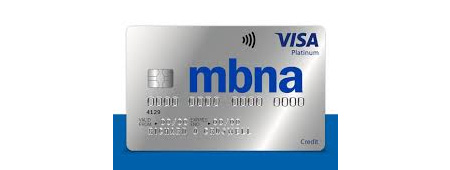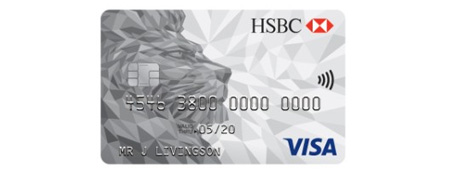Balance Transfer Credit Cards Compared
Transfer existing balances to better manage your credit card debt and make the most of 0% interest periods.
Balance Transfer Cards – Overview
Here is some important info to know before you get a balance transfer credit card:
- Great for consolidating debt.
- Can take between a few days and a few weeks to apply.
- Transfer a high % of total credit limit.
- Helps you to avoid high interest on existing balances.
- Must still be able to make monthly minimum repayments.
- Period of 0% interest varies by credit rating.
- High interest rates after initial free period.
Read the full guide below, or skip to the best rates.
Skip To Section
- Compare 0% Transfer Cards
- Balance Transfer Cards Info
- Alternatives to a Transfer Cards
- FAQ’s on Balance Transfer Cards
See the Money Advice Service to prevent debt issues with small loans.
The Best Balance Transfer Credit Card Offers Compared
Here we have highlighted the best deals for balance transfer cards in different categories, including longest interest rates, lowest transfer fees, and free transfers with the longest 0% period.
What is a balance transfer credit card?
A balance transfer credit card is a card that allows you to transfer your existing debt (or balance) onto it.
They will usually have a period of 0% interest on existing balances, and therefore can save you a lot of money if you are paying high interest rates on other cards or loans.
How do they work?
Balance transfer cards work by allowing you to transfer your debt to the card. You simply transfer the balance (aka paying off the old card / loan) which creates a balance on the new card.
If you were paying 16.5% APR interest on the previous card, then on a balance of £1,200 this would have cost you £16.50 per month in interest (or £198 per year), but with the 0% interest deal on a balance transfer card you will save yourself that interest payment, so you just made £198!
You calculate the monthly interest rate by dividing the APR % (annual percentage) by 12. In our example this would be 16.5% / 12 = 1.375%. Times that by the balance to calculate your monthly interest payment, in our example £1,200 * 0.01375 = £16.50 (we use 0.01375 because that is the decimal version of 1.375%).
Many cards charge a fee for transferring your balance (usually a percentage of the total balance) and they won’t always allow you to use 100% of your credit limit on it. There are some free balance transfer cards available though, that also have a period of 0% interest on the balance.
Why should you choose a balance transfer credit card?
A balance transfer card is perfect for those with existing debt that’s at a very high interest rate, and so they make debt consolidation very easy.
If you are currently paying a high interest rate on a credit card or loan, then you can get a balance transfer credit card, move your bad interest balance over, and pay no interest for a fixed period of time.
They are ideal for those who know they can pay off their debt on a certain date, and so can choose the exact card that provides that length of 0% interest.
How to check your eligibility
You can check your eligibility for a particular balance transfer credit card by using an online calumniator. These can be found on various other websites, such as Money Saving Expert and Money.co.uk.
You eligibility for a card will depend quite highly on your credit rating, which determines how risky you are to lend to. You may also want to consider other options, as there are often fairly low limits on credit cards, so a personal loan might be more appropriate for larger debts.
You can learn about improving your credit score here.
Pros and Cons of Balance Transfer Credit Cards
The pros of a balance transfer card are that it allows you to dodge those high interest rates. The period of 0% and low / no fee for transferring the balance means you could save thousands of pounds over a few years, making them very appealing.
However some of the cons include that they aren’t great for those with a bad credit score, as you often won’t get as long as 0% interest period and can get a much lower credit limit. In which case a small loan might be more appropriate, or perhaps using a guarantor to help you get a better loan rate.
Alternatives to a Balance Transfer Card
You may want to consider some of these alternatives before applying for a balance transfer credit card.
Balance Transfer Cards vs Debit Cards
If you’re worried about your spending, or you simply don’t have any existing debt, then choosing a debit card may be a better option for you. A debit card works off an existing amount that you’ve deposited in a bank account (see the best current account deals here), and so you don’t spend more than you can afford. This prevents you building up debt, and means you aren’t wasting your money on high interest rates from the banks or lenders.
Balance Transfer Cards vs Personal Loans
If you want to borrow a larger amount of money, then a personal loan is by far a better option. A credit card will often have an upper limit on the credit they will provide, which can stop you borrowing enough if it’s for a larger purchase (such as a car or home improvement). Using a personal loan you can often get as much as £50,000 depending on your credit history and security for your loan.
Balance Transfer Cards vs Payday Loans
A payday loan in the UK can only really be recommended as a last resort for those who need a short term loan fast. If your interest has got to the point where you really can’t cope, then a short term payday loan may represent a short term fix, but can usually make things worse, so consult a financial advisor before applying for one when you’re already in bad debt.
Balance Transfer Cards vs Arranged Overdrafts
An arranged overdraft from your existing bank can represent a better short term fix than another credit card in certain circumstances, usually when you have a poor credit history. As an existing customer, you will usually be looked upon slightly more favourably than if you were approaching them as an unknown. However the chances of you getting a large 0% overdraft are fairly low, and so usually a balance transfer credit card will be a better option.
Common Questions about Balance Transfer Credit Cards
If you have a question about this type of credit card that we haven’t already answered, then check this list below as it may be in our FAQ section.
What will my credit limit be on this card?
The maximum credit limit that a card will provide is listed on the deal website, however this isn’t always the rate that you will get. These limits are often only given to people with a very good credit score, and so the rate you receive will often by a lot lower than that.
You can use eligibility calculators to check your chances of getting the upper limits online.
How much of my balance can I transfer?
A provider will often not allow you to use up your entire credit limit with a balance transfer, but it will come close. The typical amount of your limit that you will be able to use ranges from between 90% and 95% on most offers. This can give you quite a bit of flexibility for transferring your balance over and consolidating your debts.
How do I repay my balance transfer card?
You repay a balance transfer card in the same way you do a normal credit card, by paying back the monthly minimums or by paying off the entire balance on your statement. This can be done online via the provider website, using a mobile banking app, or by phoning up the company and paying over the phone.
Does my credit report matter during the application?
Yes a credit card application is quite heavily dependent on your credit rating. This rating is calculated using your credit report, which documents all of your previous debt and lending applications, as well as how you repay your debts and if you’ve been in any debt trouble.

A better credit rating will give a better interest free period for a loan or credit card, and a larger credit limit.
Can I transfer money to my bank account with this card?
Yes a balance transfer credit card can be used to add money onto your bank account, which can then be used to repay loans or other debts. This makes them very flexible, as they don’t only let you repay credit card debt, but also loans, outstanding payments and anything else you like.



